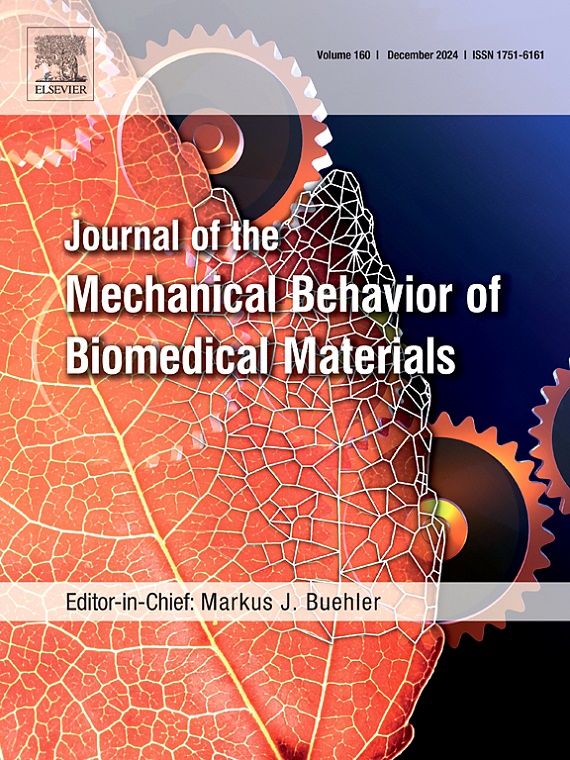Investigating simultaneous mineralization across layers during tooth development using atomic force microscopy and Raman spectroscopy
IF 3.5
2区 医学
Q2 ENGINEERING, BIOMEDICAL
Journal of the Mechanical Behavior of Biomedical Materials
Pub Date : 2025-06-04
DOI:10.1016/j.jmbbm.2025.107094
引用次数: 0
Abstract
Tooth development is a complex multi-step biochemical process characterized by the sequential formation and maturation of dental tissues, with biomineralization playing a central role in the production of mineralized tissues essential for various biological functions. This study focuses on the later stages of tooth development, marked by intense biomineralization, during which enamel and dentin undergo crucial structural transformations necessary to fulfill the mechanical functions of the tooth. Atomic force microscopy (AFM) nanomechanical testing provided insights into the microstructures and mechanical properties of enamel and dentin during both the advanced bell stage and post-eruptive stage. Additionally, Raman spectroscopy measurements revealed variations in the biochemical properties from advanced bell stage to post-eruptive stage. AFM-based micro-rheology results demonstrated that the dental papilla extracellular matrix exhibits spatially heterogeneous viscoelastic responses to dynamic mechanical stimuli, suggesting potential region-specific roles in mechanotransduction during tooth development. These findings highlight the spatial heterogeneity of microstructural, mechanical and biochemical properties that emerge during the late stages of tooth formation.

利用原子力显微镜和拉曼光谱研究牙齿发育过程中跨层同时矿化
牙齿发育是一个复杂的多步骤生物化学过程,其特征是牙齿组织的顺序形成和成熟,生物矿化在矿化组织的产生中起着核心作用,这些矿化组织是各种生物功能所必需的。本研究的重点是牙齿发育的后期阶段,以强烈的生物矿化为特征,在此期间,牙釉质和牙本质经历了实现牙齿机械功能所必需的关键结构转变。原子力显微镜(AFM)纳米力学测试提供了对钟状晚期和爆发后阶段牙釉质和牙本质微观结构和力学特性的深入了解。此外,拉曼光谱测量揭示了从钟状晚期到爆发后阶段生物化学特性的变化。基于afm的微流变学结果表明,牙乳头细胞外基质对动态机械刺激表现出空间异质性的粘弹性反应,这表明在牙齿发育过程中潜在的区域特异性机械转导作用。这些发现强调了牙齿形成后期出现的微观结构、力学和生化特性的空间异质性。
本文章由计算机程序翻译,如有差异,请以英文原文为准。
求助全文
约1分钟内获得全文
求助全文
来源期刊

Journal of the Mechanical Behavior of Biomedical Materials
工程技术-材料科学:生物材料
CiteScore
7.20
自引率
7.70%
发文量
505
审稿时长
46 days
期刊介绍:
The Journal of the Mechanical Behavior of Biomedical Materials is concerned with the mechanical deformation, damage and failure under applied forces, of biological material (at the tissue, cellular and molecular levels) and of biomaterials, i.e. those materials which are designed to mimic or replace biological materials.
The primary focus of the journal is the synthesis of materials science, biology, and medical and dental science. Reports of fundamental scientific investigations are welcome, as are articles concerned with the practical application of materials in medical devices. Both experimental and theoretical work is of interest; theoretical papers will normally include comparison of predictions with experimental data, though we recognize that this may not always be appropriate. The journal also publishes technical notes concerned with emerging experimental or theoretical techniques, letters to the editor and, by invitation, review articles and papers describing existing techniques for the benefit of an interdisciplinary readership.
 求助内容:
求助内容: 应助结果提醒方式:
应助结果提醒方式:


